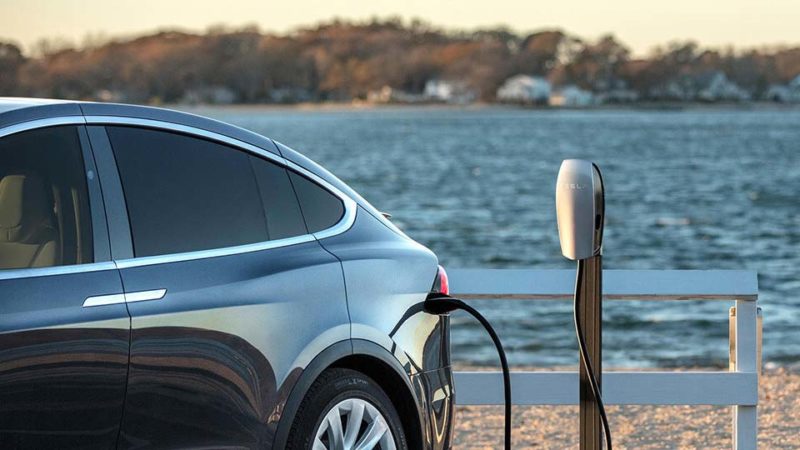A move by South Australia to fast-track the introduction of new standards for electric vehicle charging equipment could add thousands of dollars to the cost of home EV chargers, and erect yet another barrier to the adoption of EVs in Australia.
The EV industry, including industry leader Tesla, warns that the new rules are misguided. They may require EV chargers – along with pool pumps, air conditioners and electric hot water systems – to have certain demand response capabilities which means they can be controlled of switched on or off by a third party, such as a network operator.
But the EV industry says EV chargers, unlike the other appliances, already have sophisticated equipment that can encourage charging in the middle of the day to address issues such as soaking up the solar sponge, which is chief of mind for states like South Australia.
And they say that the idea that the EV industry would agree to a single standard imposed in South Autralia, unique to the world, is wrong and based on false assumptions. The state energy ministers assume the cost would only be $40, but some EV advocates argue it could be in the thousands of dollars, or up to 100 times more.
The world’s leading EV company Tesla has filed a submission to the South Australia Office of Technical Regulator that warns the new rules will add significant costs to EV charging stations, and slow the uptake of EVs in Australia, which already lags behind the world.
It argues that Australia, and South Australia in particular, should embrace an open international standard for home carging stations, and not introduce a new standard unique to this country which could force it to withdraw its charging stations because of the cost of upgrades.
“This approach is incompatible with encouraging the development of EVSE to be responsive to market or tariff signals,” Tesla writes in its submission. “The approach is also misaligned with the weight of EV and EVSE standard work that is being done internationally. This has a number of flow-on effects.
“It adds costs specific to South Australian EV customers. It adds additional compliance work specific to South Australia that has no use- case in any other global jurisdiction and is unlikely to be taken up in other Australian states. Functionality that this provides is considered outdated and superceded by international developments.
“As such it reduces the attractiveness of South Australia as a market for both EV OEMs (car makers) and prospective EV customers.”
The introduction of “demand response” capabilities was agreed in principle by state and federal ministers in 2019, but South Australia is seeking to fast track new programs because it is at te point end of the energy transition, with a share of rooftop solar that meets 100 per cent or more of state demand on occasions.
As RenewEconomy reported last week, those new demand response mechanisms could apply to a range of home appliances, suc as pool pumps, air con units and hot water systems. It wants to fast track these protocols and standards, and EV charging equipment also finds itself caught up in the process.
See: Solar switch off rule to extend to EV chargers, pool pumps and air-con units.
Tesla says the new protocols could have the opposite effect on that intended of a two-way grid, because the standards being mooted by the OTR in South Australia would exclude the ability to use such chargers to provide critical grid services such as frequency control, one of the critical new attributes being tested in various trials around the country.
“We also believe that it may work to disincentivise the uptake of electric vehicles in South Australia which will add load and act as a valuable mitigant to the current daytime solar troughs being experienced in South Australia.”
Tesla suggests that South Australia and the rest of the country sould sign up to the Open Charge Point Protocol (OCPP) that is currently being used or considered across North America and Europe.
This would still allow aggregators to make competitive offer for use of EV chargers in the market (similar to current virtual power plant arrangements for batteries and solar), and the communications protocol can also be used to create emergency backstops if needed.
But it warns that if the proposed standard is adopted – the requirement to install a DRED device – then Tesla is likely to withdraw its EV carging units from the state and Tesla drivers would have to buy more expensive equipment from other parties. Another standard option currently under consideration could double the price of the EV chargers.
Dr Martin Gill, a standards representative for the Consumers Federation of Australia, fears the extra cost of EV chargers could be even higher, up to an extra $4,000 each, if all EV chargers are required to deliver “vehicle to grid” services, giving the network the ability to switch on charging stations, and creating load, when they see the need.
“The financial modelling falsely assumes V2G can be added for only $40,” he writes in a LinkedIn post. “This underestimates the actual cost by several thousand dollars.”
Gill says there is an “invalid assumption” that controlled charging can only be achieved if all EV chargers sold in Australia
support the same single control standard.
“While this assumption is invalid the Council of Australian Governments (COAG) Energy Council (EC) used flawed
analysis to support a mandate,”he writes. “The COAG EC has been poorly advised.”
Gill says EV and EV charger manufacturers already support the desired demand response capabilities, and consumers using phone apps are able to control when and (for many) how fast their EV will be charged.
“Using this existing capability is possible at far lower cost than the proposed mandate,” he says. “Controlled charging does not require EV Chargers support a single standard. All the benefits can be delivered at far lower cost by using the internet to
communicate with EV charger management systems.”

Giles Parkinson is founder and editor of The Driven, and also edits and founded the Renew Economy and One Step Off The Grid web sites. He has been a journalist for nearly 40 years, is a former business and deputy editor of the Australian Financial Review, and owns a Tesla Model 3.

